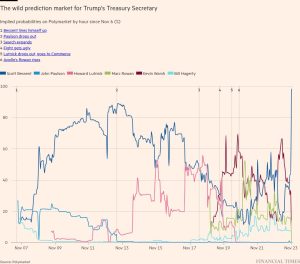New experiments in grape growing
If you’re reading this column, you surely know the names of the famous wine grapes Chardonnay, Cabernet Sauvignon, Pinot Noir and so on. Soon, you’re going to have to learn new ones. All the vines mentioned above belong to the European grapevine species, Vitis vinifera, whereas the (relative) newcomer vines to which I refer are hybrids of vinifera varieties and members of other species of the Vitis genus.
Grape breeders have been experimenting with crossing and hybridising vines for at least a couple of centuries, notably in North America. (A cross involves two vines of the same species, a hybrid more than one species.) In France, Louis Bouschet and, later, his son Henri were at it even before the arrival of the phylloxera insect from across the Atlantic that devastated the vineyards of Europe in the late 19th century, making the hybridisers’ work more urgent.
Vinifera vines, which had already fallen prey to the fungal diseases downy and powdery mildew (which were, like phylloxera, imported unwittingly on transatlantic steamships), proved disastrously susceptible to this North American chewer of vine roots. It would perhaps have been logical to replace them wholesale with resistant North American varieties, but that would hardly have found favour with Europe’s wine establishment — especially since wine made from many of them tasted so very different from European wine, with the slightly rank aroma often found in American grape juice.
Eventually, and not without considerable objections, a solution to the phylloxera crisis was found: to graft vinifera vines on to American rootstocks, retaining European flavours and characteristics. Such grafted vines are responsible for the vast majority of wine made throughout the wine world today.
Early European hybridisers of European and American varieties tended to breed grapevines for productivity rather than wine quality. This, of course, gave hybrids a bad name and the appellation contrôlée regulations of the early 20th century specifically banned them from these superior wines. Hybride became a dirty word associated with the sort of cheap plonk drunk (in quantity) by the poor in the 20th century.
A new century has brought new challenges. And, thanks to climate change, whole new wine regions. Vineyards are currently proliferating throughout Scandinavia, Poland and the Baltic states, but they experience a much shorter growing season than vineyards further south. So they need vine varieties that will put up with harsh winters, bud later and ripen earlier than traditional European ones. Genes from Vitis amurensis, a vine species able to withstand Mongolian winters, can be especially useful here.
The northern European climate is relatively wet too, which dramatically increases the risk of fungal diseases. Enter Rondo and the even more disease-resistant Regent, dark-skinned hybrids developed in Germany in the 1960s. They are now grown for red wines in Scandinavia, Benelux, Britain and Germany, where there are nearly 2,000ha of Regent. In an age when the weather is ever less predictable, and consumers ever less enthusiastic about agrochemicals, varieties that are naturally disease-resistant and need far fewer sprayings seem to be the answer.
But EU wine lawmakers had a problem. Hybrids, no longer dogged by off-putting flavours, were still officially regarded as inferior. The regulations had to be changed to allow these new varieties (not officially known as hybrids but as “disease-resistant varieties”) into appellation wines.
Examples that are especially popular already in Scandinavia include Phoenix, bred in Germany in 1964 and the very first disease-resistant variety to be approved for quality wine production, in 1992. Solaris, bred in 1975, has also been widely planted in the far north of Europe while Souvignier Gris, another German hybrid, seems to be gaining ground not just in Germany but also in France.
How will consumers accept all these new names? Last August, Tesco introduced its first wine made exclusively from one of these disease-resistant varieties: a light, floral £8 white that it was bold enough to name Tesco Finest Floréal, after the hybrid it is made from. Floréal vines, currently grown in the Languedoc and the Loire, were released for commercial production as recently as 2018 and much is made of the vine’s resistance to mildews and black rot, the latter a particular threat in wet weather. Despite the unfamiliar (but admittedly rather pretty) name, initial sales have apparently been strong.
There are pockets of wine production around the world, especially in North America but also Brazil, Japan, Russia and Crimea, where hybrids have long been grown and whose local consumers have become used to their names — perhaps neither knowing nor caring that they are hybrids, being free of European prejudice. Eastern Canada used to be much colder than it is now and hybrids such as Baco Noir, Maréchal Foch and especially Vidal Blanc have pleased growers and wine drinkers there for many years. The Midwest-bred La Crescent, La Crosse, Marquette and the Gewürztraminer-like Traminette have proved popular in parts of the US.
Until recently, new varieties in France, mainly from Montpellier and more recently from Bordeaux, have tended to be all-vinifera crossings such as Caladoc and Marselan rather than hybrids of two different species. The French have been relatively slow to develop disease-resistant hybrids and so far only Floréal, Voltis, Selenor and Oplaor have been approved for white wine production and Artaban, Vidoc, Coliris, Lilaro and Silano for reds. Note that these names have no relation to any famous grape name, unlike Traminette, for example, a Gewürztraminer soundalike. Apparently, French lobbyists are trying to prevent naming any new variety after a well-known grape, however closely it may be related to one.
The Italians have been more creative. The famous Rauscedo nursery in north-east Italy has been an active breeder of disease-resistant vines, calling them (registered) names such as Cabernet Volos, Pinot Kors and Sauvignon Nepis (which I was told in New Zealand was being considered by Cloudy Bay), all of these names referring to the established vinifera variety that was hybridised. These names will surely be an easier sell to a tradition-bound wine-drinking public than Artaban and Vidoc, which sound more suitable for a pharmacy.
In a vineyard in the cool, wet climate of Denmark recently, I was able to compare the performance of spindly, yellow-leaved vinifera Riesling with the healthy, luxuriant, bright green, photosynthesis-promoting leaves of disease-resistant Phoenix planted in the next row. However, the vine grower, Søren Hartvig Jensen of Kelleris winery, told me that Solaris was already showing a dangerous lack of resistance to some fungal diseases, highlighting the need for breeders to be ever-vigilant about new threats to vine health.
Jensen reported that in Denmark alone they are researching 40 new varieties, and over the next 10 years will choose those that pollinate well and will make the best wine — a rather important consideration.
Some superior wines from hybrid vines
Proof that non-European vine species have their uses too
WHITES
• Tesco Finest Floréal 2023 Vin de France (11.5%), £8 Tesco
• Fjälltopp Solaris 2020 Sweden (14%); SKr350 Systembolaget
• Lakićević Solaris 2022 Kosovo (13.5%); £30 Hic!
• Inniskillin, Gold Vidal Icewine 2021 VQA Niagara Peninsula, Ontario (9.5%); £44 a half bottle London End
REDS
• Sauvage Cabernet Cortis 2022 Vin de France (12.5%); £11.95 The Wine Society
• White Castle Regent 2020 Wales (11%); £26 Barry Island Spirits Co; (2022 is £27.99 Fine Wines Direct)
SPARKLING
• Komorebi Solaris Brut 2022 Norway (12.5%); £32 if bought at the winery as part of a tour
• Kelleris, Utopia Renée Rosé (Rondo) 2018 Denmark (12%); DKr349 from the winery
• Breaky Bottom, Cuvée Koizumi Yakumo Seyval Blanc 2010, England (12%); £54.62 Corney & Barrow
Tasting notes, scores and suggested drink dates on Purple Pages of JancisRobinson.com. International stockists on Wine-searcher.com
Follow @FTMag to find out about our latest stories first and subscribe to our podcast Life and Art wherever you listen
#experiments #grape #growing




